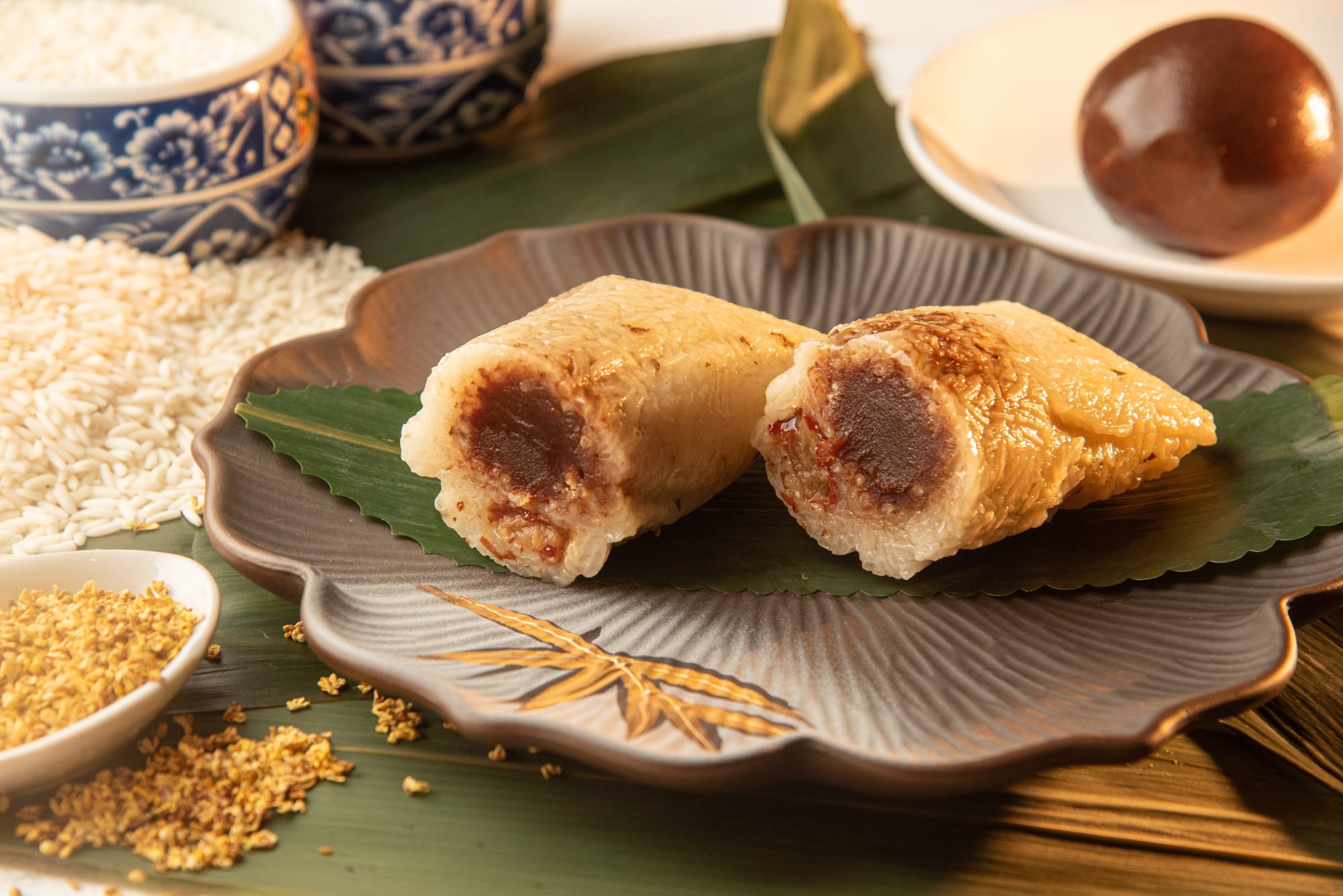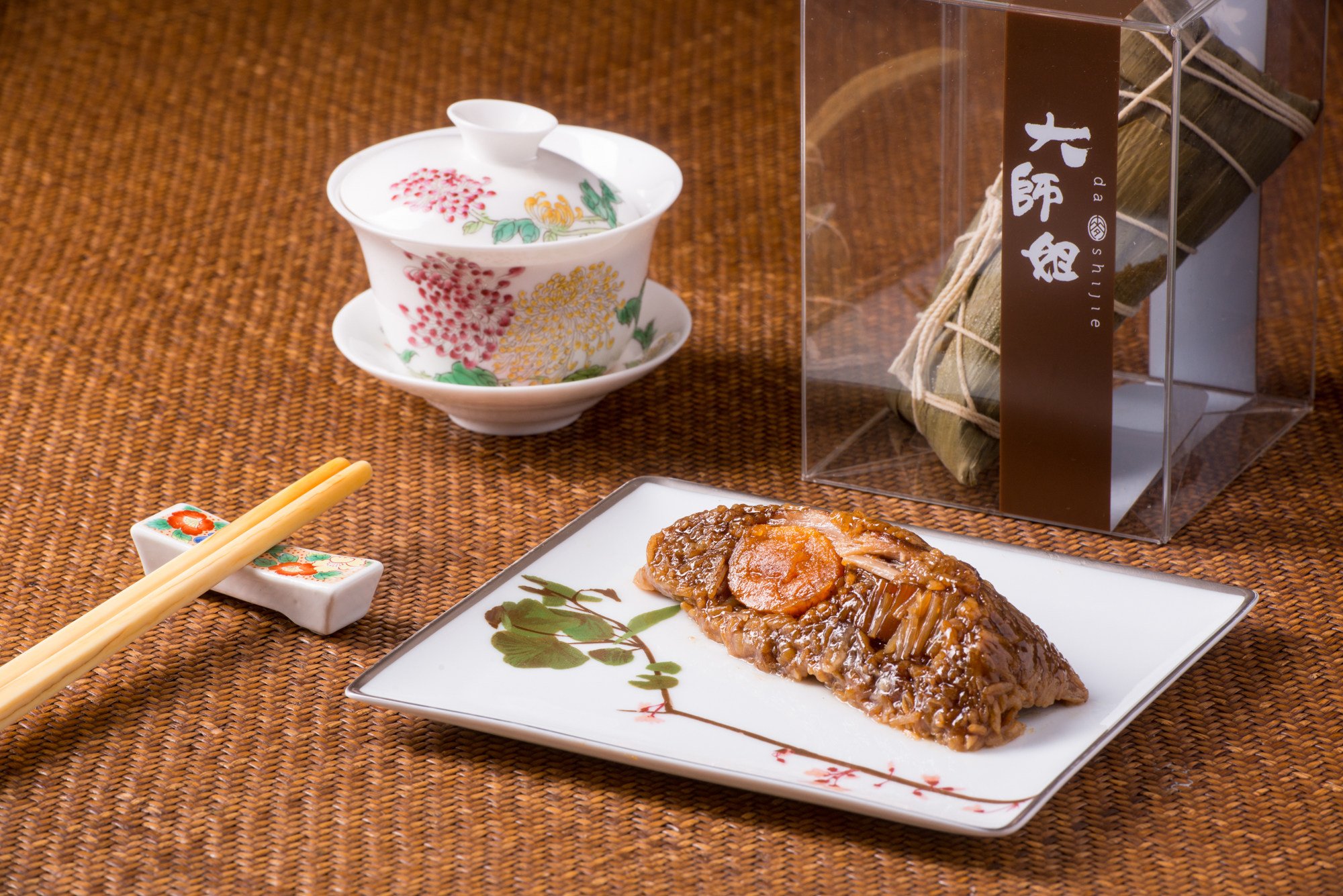“The biggest characteristic of the Guangdong version is that we use boiled mung beans in addition to glutinous rice.”
“It’s when you want a bigger one for sharing or when you add extra ingredients like dried scallops, mushrooms [or] dried oysters, that you need to make it into a bigger shape, or guo jing zong.”
Sweet alkali zongzi, which are unique to Guangdong, are smaller and are soaked in alkaline water. “The sweet fillings usually include red bean paste or lotus seed paste,” Yiu says.
Chaozhou
Yiu says that “Chaozhou, in eastern China, is famous for their sweet and savoury approach to zongzi.” This version does not use mung beans and includes salted pork, dried shrimp, dried mushrooms and red bean paste. The ingredients are cooked before being wrapped in glutinous rice.
Suzhou

Further north, in Suzhou, there are three types of rice dumpling: savoury, sweet and white.
According to Hong Chi-ki, executive chef of Jiangsu Club, in Hong Kong’s Sheung Wan neighbourhood, the main ingredients of savoury rice dumplings in Suzhou are fatty pork and Jinhua ham.
“Chefs nowadays are hesitant to use ham, as the oil from the fat can get too greasy, so they use less ham and replace it with salted duck eggs,” Hong says.
The sweet rice dumplings of Suzhou are filled with red dates and red bean paste, and garnished with osmanthus flowers. White rice dumplings are made with plain, pure glutinous rice and served with sugar or an osmanthus flower dressing.
Shanghai
To the east of Suzhou, Shanghai is a city whose dumplings are famous for their rice, which is soaked in premium soy sauce before cooking.
The fillings in Shanghai’s distinctively rectangular rice dumplings include pork belly, salted egg yolk and dried scallops. Shanghainese zong have to be wrapped in bamboo leaves from the Huangshan mountains, in Anhui province, as other leaves are not wide enough to be made into the distinctive shape.

Fujian
Beijing
The biggest difference in the zongzi of China’s northern provinces is that reed leaves are used to wrap the glutinous rice into a cone rather than a prism. The fillings tend to be sweet, with either red bean paste or dates used.
These dumplings can be eaten hot or cold because they do not contain meat.
Malaysia

“In the diaspora, Malaysian Dragon Boat Festival dumplings, or bak chang, often have fillings of pork belly, pork [shoulder], chestnuts, salted egg yolk, shiitake mushrooms, and sometimes dried shrimp,” says Cinderella Yeung, head chef of S.E.A Eatery, a Southeast Asian restaurant in Tai Koo, Hong Kong.
These zongzi are wrapped in bamboo leaves and steamed, and typically eaten on their own without dipping sauce.
Singapore
As well as typical versions of Chinese zongzi, Singaporeans also enjoy Peranakan rice dumplings called Nyonya chang.
In Singapore, these dumplings are usually accompanied by a light soy sauce or chilli sauce for dipping.
Thailand

In Thailand, Dragon Boat Festival is celebrated with glutinous rice dumplings called ba cang, which are made with bamboo leaves and rice that is flavoured with soy sauce before being wrapped.
As well as the usual pork and salted egg yolk, the ba cang fillings include sweet taro ball, peanuts and ginkgo nuts.
“These sweet dumplings are called ka cang, where glutinous rice is soaked in coconut milk, and filled with a variety of ingredients including coconut flesh, black beans, taro and squash.”
Vietnam

The rice dumplings of Vietnam’s southern cities like Ho Chi Minh City are called banh chung or banh tet. “They are usually cylindrical and are filled with a combination of pork, shrimp, mung beans, and sometimes dried shrimp or mushrooms,” Yeung says.
“The northern variety called banh u nuoc tro, are usually sweet. These are wrapped in pandan or banana leaves and steamed. They are commonly served with a fish sauce-based dipping sauce, sometimes with chilli and lime.”

